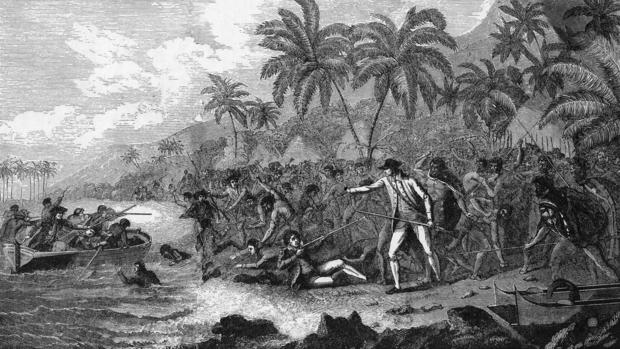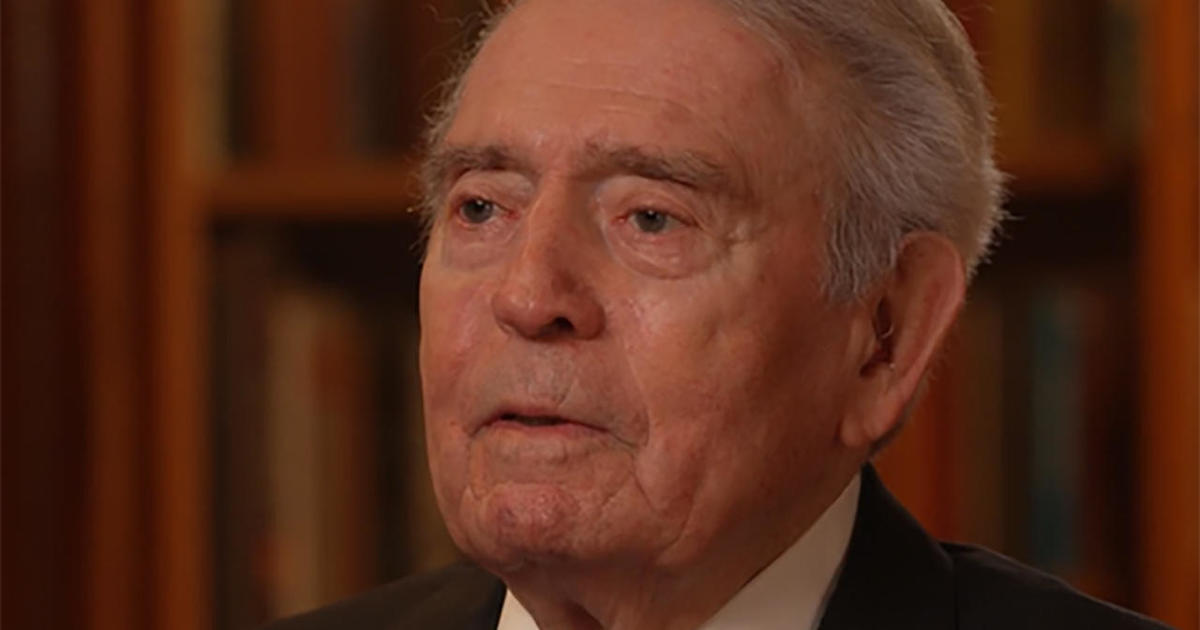Captain James Cook and the controversial legacy of Western exploration
On the Big Island of Hawaii, where the waves roll into Kealakekua Bay, a white obelisk 27 feet tall looms over the shoreline. It's a tribute to the great circumnavigator Captain James Cook. It stands just feet from where he died.
Akoni Palacat-Nelsen is a native Hawaiian (or kanaka, as they call themselves) who works for the Office of Hawaiian Affairs advocating for the native population. He says there is a lot of frustration that many people think history began here with Captain Cook.
"He brought a lot of diseases, he brought a lot of problems to our society, he introduced westernization," said Palacat-Nelsen.
Captain Cook is a controversial figure – villain or hero, colonizer or trailblazer, depending on who is telling the story. But what is not in dispute is that in the 1700s the British explorer literally put much of what we now know as the Pacific Ocean on the map, creating detailed diagrams of the places he was the first European to discover, including New Zealand, Australia, the Cook Islands (which still bear his name), and the islands of Hawaii.
"Whatever you think about Cook, he's certainly in the pantheon of the greatest explorers of all time," said writer Hampton Sides. "He gave us the contours of the Pacific Ocean."
Sides is author of the new book, "The Wide Wide Sea," documenting Cook's final and fateful voyage. "He had three voyages around the world; each one was monumental," said Sides.
Cook's third voyage left England in July of 1776, just as the American Revolution was taking off. His mission was to go around the Cape of Good Hope and then proceed to the west coast of North America, all the way up to Alaska, in pursuit of the elusive, fabled Northwest Passage. On his way, he stumbled upon islands in the Pacific. "He couldn't believe that he had found these islands," Sides said. "These aren't just lowly atolls somewhere out in the Pacific. These are massive volcanic islands with thousands and thousands of people living here, a whole thriving, flourishing civilization. He couldn't believe it. He was astounded."
Cook and his men came ashore on the Big Island of Hawaii, warmly welcomed by the islanders at a temple during a religious festival.
Sides writes in his book that, unlike many of his contemporary explorers, Cook took a genuine interest in the people he encountered. He treated them with respect, tried to prevent his men from spreading venereal disease, and made little attempt to convert them to Christianity.
And yet, "On this third and final voyage, something was wrong with Cook," Sides said. "He was mercurial. He was violent. He was cruel to the native people that he encountered as well. He just was losing it all the time near the end."
That end came when Cook and his men overstayed their welcome, attempting to hold the king of Hawaii ransom to get back a rowboat taken by the local people. Sides said, "It turned into a brawl and a melee, and things did not go well for Captain Cook."
Cook was killed on the shore of Kealakekua Bay on Valentine's Day 1779.
And yet, nearly 250 years later Cook's story is still being told, revisited and revised as the age of imperialism has not aged so well. Statues of Cook have recently been toppled in Canada and Australia, his monument in Hawaii defaced. Cook was the leading edge of what Pacific Islanders call the "fatal impact," and the death and loss of their culture that followed.
Sides said, "I get the fact that he's become a symbol of imperialism, because he was the first. It's easy just to assign the blame to one person rather than all the people that came after him."
Yet, on the Big Island you still find Cook's name on a post office, roadside stands, and an apartment complex. There is no simple break from this piece of the past.
The Puʻuhonua o Hōnaunau National Historical Park is one of the last places on the Big Island that still looks like what Captain Cook and his crew would have seen centuries ago. It was known as a place of refuge, where if you broke a rule or a law you could get a second chance.
It's also a place where Hawaiians get to preserve and share their history, said Keola Awong, the chief of interpretation and education. "It's a second chance for us to get to tell our story, and tell it from our perspective," she said.
She wants people to see Hawaii as more than a tourist attraction – more than white sands and scarlet sunsets, a place that existed long before it was "discovered" by a Captain named Cook.
Awong said she feels most tourists who come to Hawaii don't know much about the true history. "I think they see the history told by the western point of view," she said. "Our culture is very much alive. Our culture carries on and continues."
READ AN EXCERPT: "The Wide Wide Sea" by Hampton Sides
For more info:
- "The Wide Wide Sea: Imperial Ambition, First Contact and the Fateful Final Voyage of Captain James Cook" by Hampton Sides (Doubleday), in Hardcover, Large Print Trade Paperback, eBook and Audio formats, available April 9 via Amazon, Barnes & Noble and Bookshop.org
- hamptonsides.com
- Puʻuhonua o Hōnaunau National Historical Park, Hawaii
Story produced by John Goodwin. Editor: Ben McCormick.






